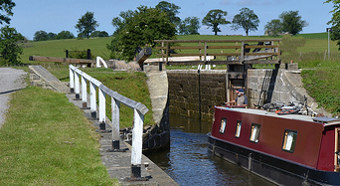AS PART of British Waterways' need to protect and maintain the waterways, supervisors and operational staff have received training from Heritage Craft Alliance, covering the maintaining of brickwork, masonry and lime mortar.
 This is to the National Vocational Qualification Level 3 in Heritage Skills and Site Supervision, with part of the training being practical, repairing the bywash at Scarland Lock at Gargrave on the Leeds and Liverpool Canal, that was in need of work.
This is to the National Vocational Qualification Level 3 in Heritage Skills and Site Supervision, with part of the training being practical, repairing the bywash at Scarland Lock at Gargrave on the Leeds and Liverpool Canal, that was in need of work.
Lime mortar
The team re-bedded loose stonework and worked with lime mortar, one of the oldest known types of mortar, which with the introduction of Portland cement during the 19th century, faced a rapid decline. However, its soft, porous properties provide the right characteristics to help repair historic, brick and stone-built structures.
Judy Jones, Heritage Advisor for British Waterways, explained:
"The fact that inland waterways are a ‘working heritage' sets them apart from other historic structures and demands a unique approach to their management and conservation. Our highly skilled waterway operatives already receive in-house training and are well aware of what to consider when working on these structures.
"Heritage training needs vary across British Waterways employee roles—from specialist practical skills to general awareness requirements so it is therefore imperative that a wide range of opportunities are developed to meet this need."
The National Vocational Qualification Level 3 requires competence that involves the application of knowledge in a broad range of varied work activities performed in a wide variety of contexts, most of which are complex and non-routine. There is considerable responsibility, and autonomy and control or guidance of others is often required.
